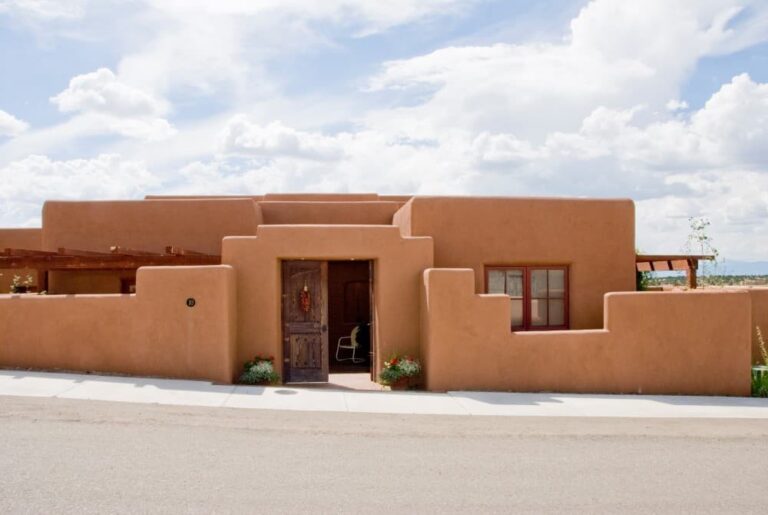60+ Different Types Of Pine Trees (With Names And Pictures)
Pine trees, known for their versatility and ornamental value, thrive in a wide range of climates, from cold to subtropical. Their edible pine nuts have been a significant part of many cultures throughout history, not just because they’re ancient but also because they’ve been a constant source of timber and lumber. In this article, we’ll delve into the different types of pine trees, their uses, and provide a comprehensive overview.
With over 100 species to choose from, pine trees are an integral part of landscaping and gardening. Some popular varieties include the Aleppo Pine (Pinus halepensis), Austrian Pine (Pinus nigra), Bhutan Pine (Pinus wallichiana), Bosnian Pine (Pinus heldreichii), Bristlecone Pine (Pinus aristata), and many others. These trees are not only a symbol of winter but also a source of sustainable timber, making them a popular choice for landscaping and interior design.
What is a pine tree?
Pine trees are a staple in the world of conifers, prized for their versatility and durability. They can thrive as ornamental shrubs, providing a picturesque backdrop for landscaping designs. Alternatively, they can be cultivated on a larger scale to produce timber or serve as majestic Christmas trees. At full maturity, some pine tree varieties can soar to incredible heights, reaching up to 150 feet or more.
The tallest and oldest recorded pine tree, the Great Basin pine, stands tall at an impressive 273 feet in Yosemite National Park. This remarkable specimen is part of the Pinaceae family and genus Pinus, a testament to the natural world’s awe-inspiring beauty.
What does a pine tree symbolize?
Pines are steeped in cultural significance, boasting a rich history that spans thousands of years. In many Native American and Mexican cultures, pines are revered as symbols of longevity and wisdom, reflecting their impressive age and the valuable insights they’ve witnessed over time. In Norse mythology, pines hold special meaning as an emblem of love and fertility, closely tied to the goddess Freya’s domain.
Moreover, these resilient trees have come to represent peace and hope due to their remarkable ability to thrive in a wide range of environments, adapting to conditions that would be challenging for many other species. As such, pines serve as powerful reminders of the importance of perseverance, resilience, and the enduring power of nature.
Pine tree needles
Pine needles are a defining characteristic of pines, serving as a vital component for their ability to thrive in environments ranging from cold and dry to subtropical. The waxy cuticles on these needles play a crucial role in preventing dehydration, allowing pine trees to flourish in conditions that might be challenging for other species. Interestingly, pine needles have an acidic nature, which is why it’s often recommended to cultivate pines at a distance from existing vegetation.
Types of pine trees for landscaping
Aleppo Pine (Pinus halepensis)
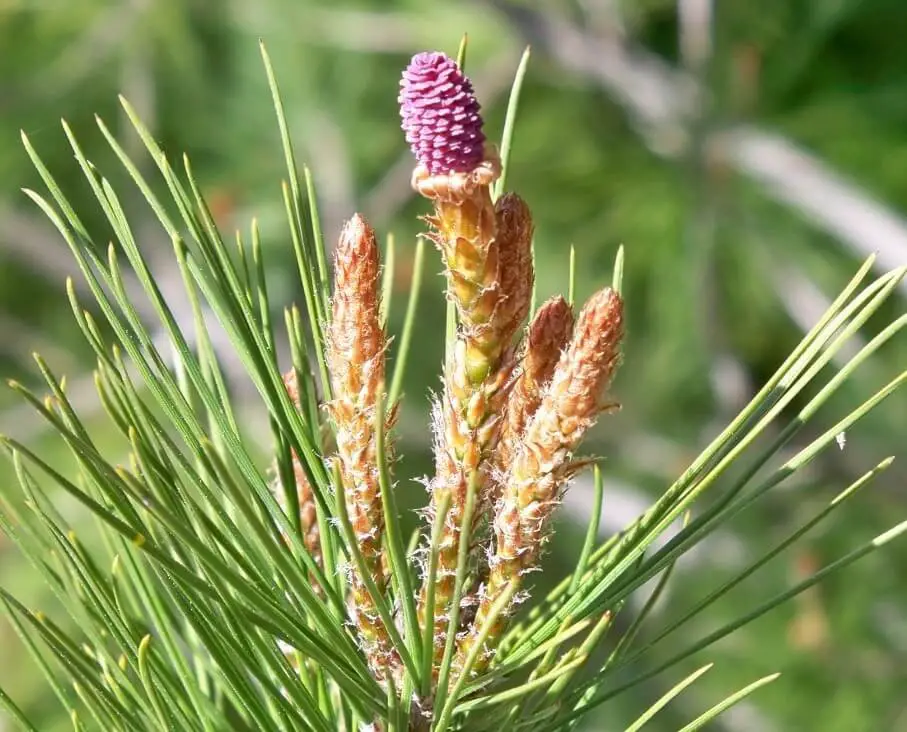
The Monterey Pine (Pinus radiata), also referred to as the Jerusalem pine, is a popular choice for home landscaping in southern California due to its remarkable resilience and adaptability. One of its most notable features is its exceptional drought tolerance, characterized by yellow-green needles that can withstand arid conditions with ease.
However, its invasive tendencies mean it tends to thrive in areas ravaged by fire, making it essential to consider the potential environmental impact when incorporating this species into your outdoor design.
Austrian Pine (Pinus nigra)
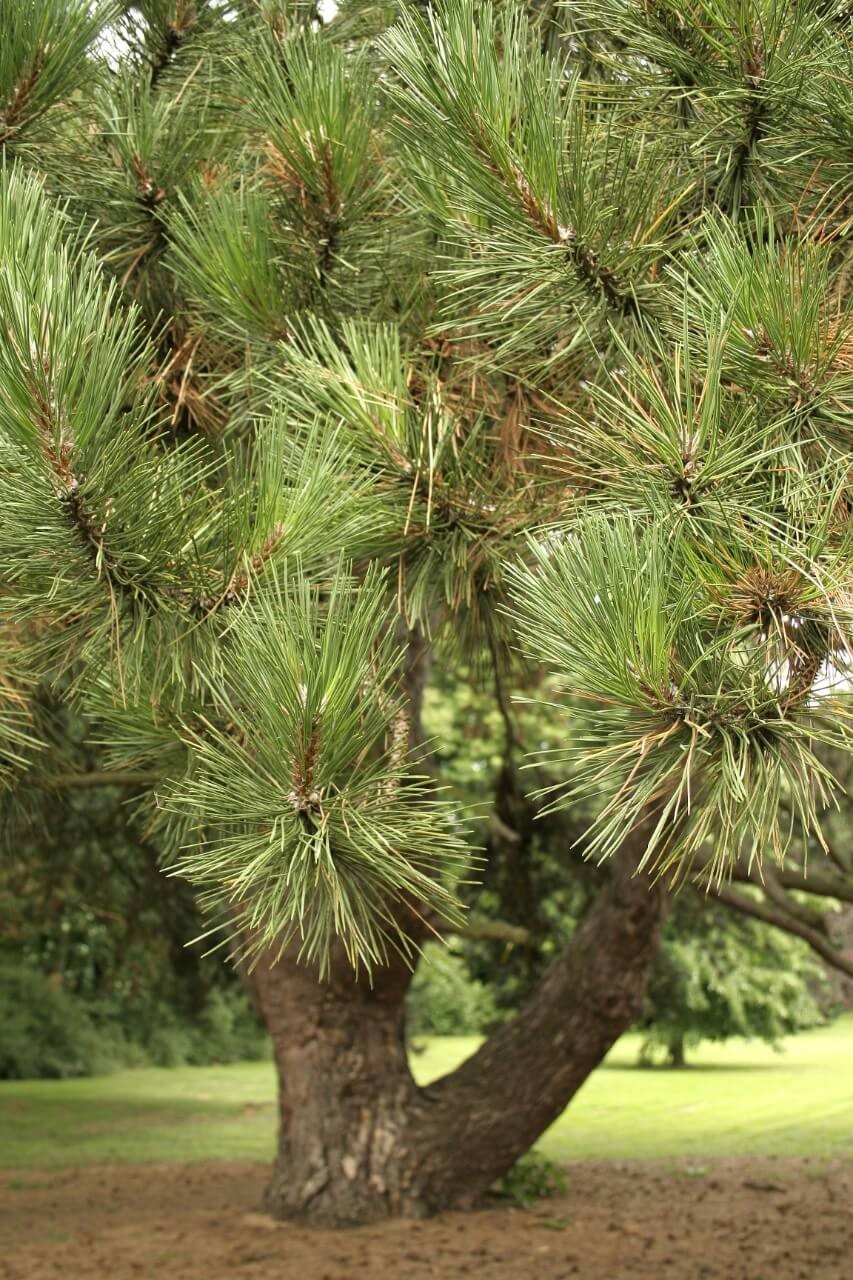
The European black pine’s unique characteristic lies in its remarkable transformation – from a pyramid-like shape when young to a rounded canopy as it matures. Its dense, tufted needles are another distinguishing feature. Typically used as screens in large properties, this tree also has its downsides, being prone to various problems and diseases.
Bhutan pine (Pinus wallichiana)
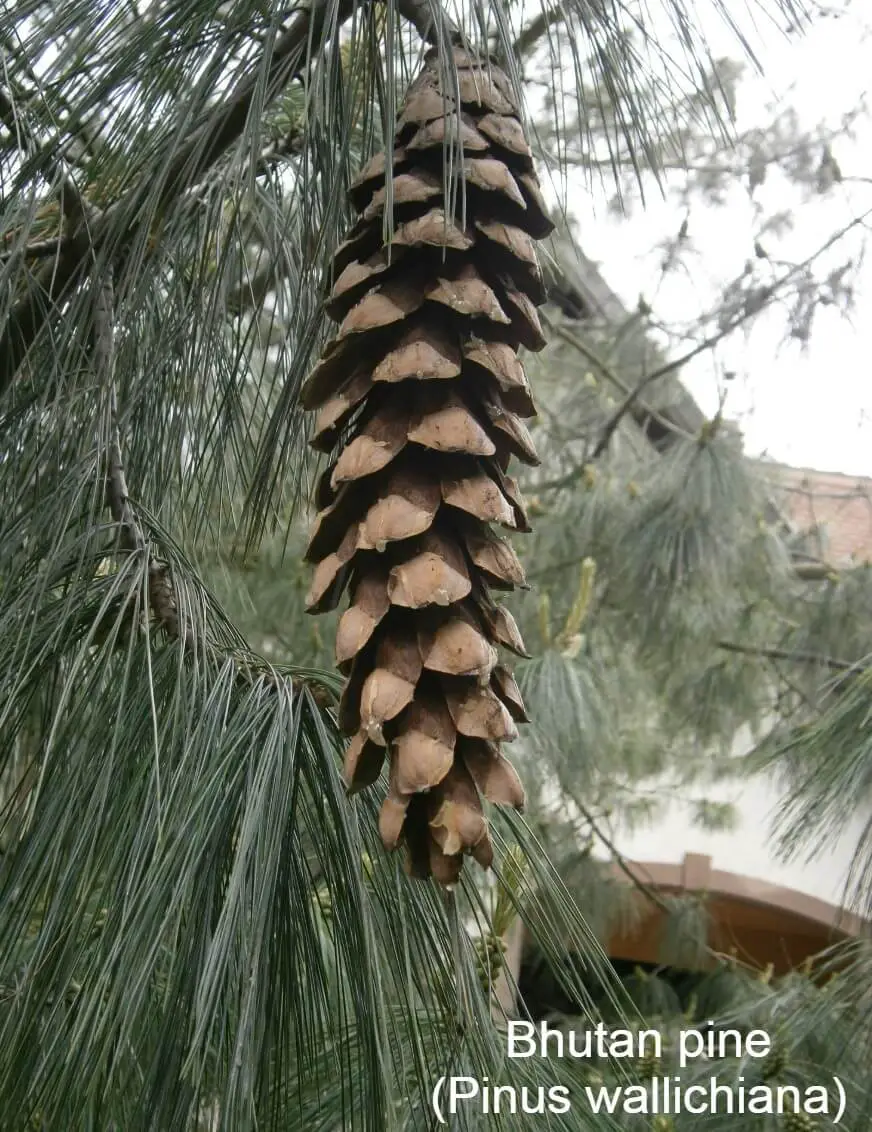
The Himalayan white pine, also referred to as a reliable provider of turpentine, boasts significant importance within the timber sector. Its robust foundation, vertically arranged limbs, and vibrant emerald leaves render it an aesthetically pleasing choice for garden specimen trees, characterized by its distinctive pyramidical shape.
Bosnian Pine (Pinus heldreichii)

The Pinus leucodermis, also known as the Bosnian pine or Silver Fir, holds a special significance as the official symbol of Italy’s Pollino National Park. Interestingly, its natural habitat stretches across the Balkan regions and parts of Southern Italy. One of its most distinctive features is the arrangement of its dark green foliage in short bundles, accompanied by slender cones that transform from a vibrant purple-blue to a deep brown as the tree matures.
This resilient species has also earned the reputation of being one of the oldest trees in Europe, a testament to its remarkable adaptability.
Bristlecone Pine (Pinus aristata)
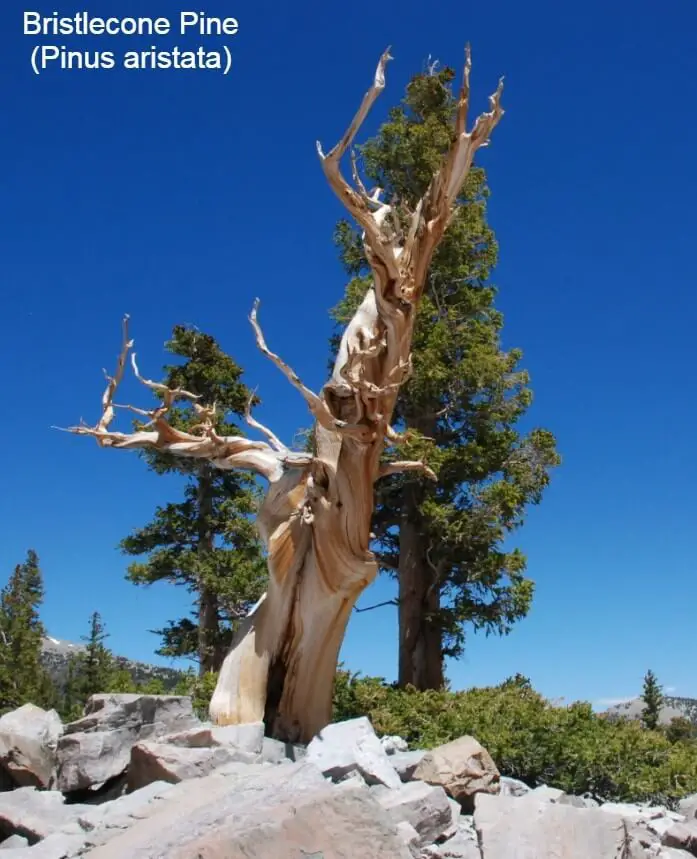
Within the Southern Rockies, a unique dwarf pine species thrives, characterized by its sluggish growth rate and stunted stature. Despite this, it boasts an impressive lifespan, earning it recognition as one of the oldest living pine species globally, with a documented history spanning 4,000 years.
Bull pine (Pinus ponderosa)
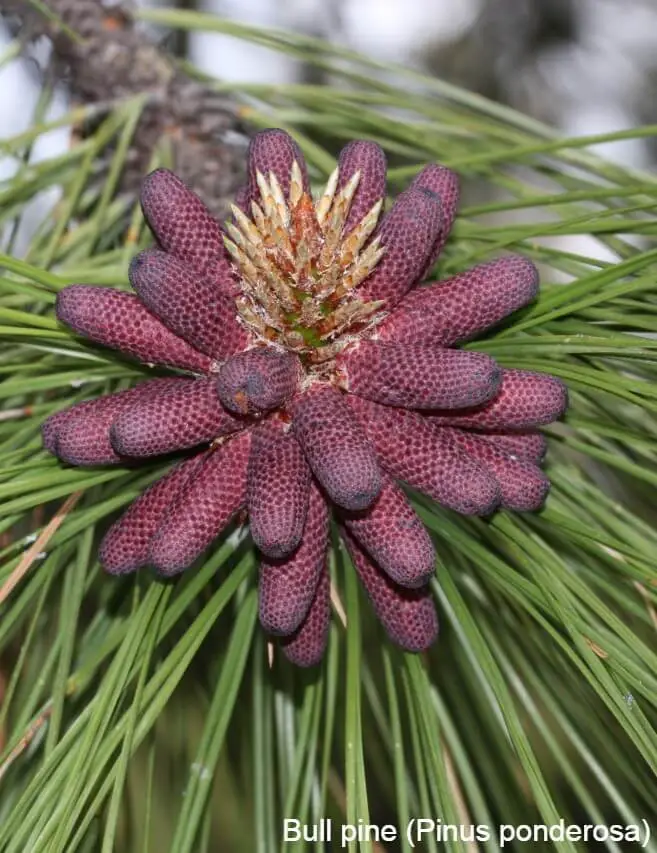
The Arizona pine, also known as yellow pine, boasts an impressive array of characteristics that set it apart from other species. One of its most notable features is its flaky, brown-red bark, which provides a unique texture and coloration to the tree’s exterior. The needles, which grow in bundles of three, are another distinctive feature, while the large, hard-shelled cones are a testament to the tree’s reproductive prowess.
As it matures, the Arizona pine transforms from a pyramidal shape in its youth to a rounded silhouette, giving it a mature and stately appearance. Perhaps most intriguingly, the entire tree emits a distinctive musky, citrusy aroma that is both captivating and invigorating.
California Foothill Pine (Pinus sabiniana)
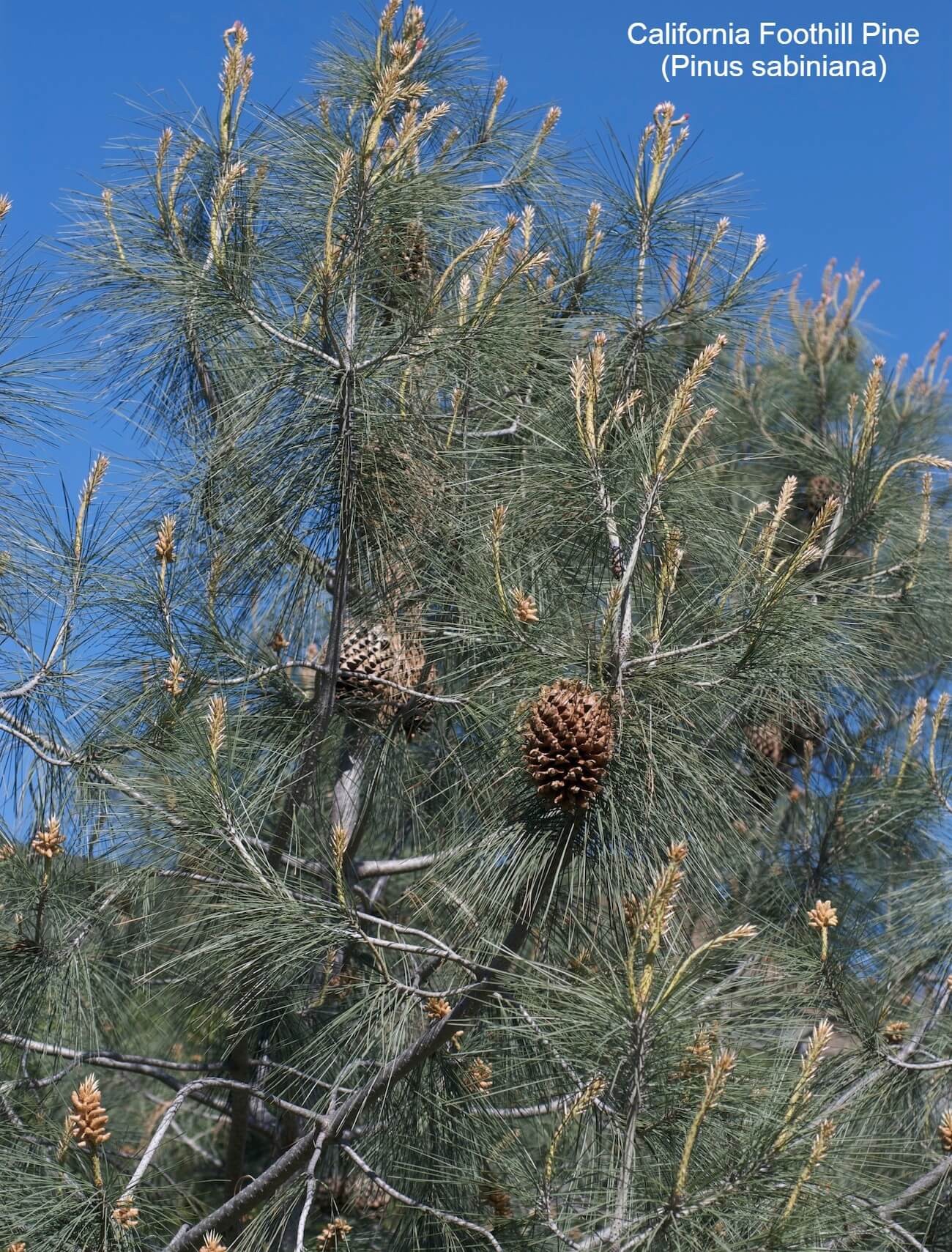
California is home to an expansive grove of a specific tree species, renowned for the delicious nuts it produces, which are often used in the preparation of pesto. Notably, these nuts have a unique flavor profile characterized by notes of buttery sweetness and citrus zing, making them a popular choice for snacking raw.
As a landscape tree, this species is also admired for its distinctive features, including its rich brown, forked trunk, deep green lacy foliage, and transparent crown, which provide a striking visual display.
Canary Island Pine (Pinus canariensis)

The majestic tree stands out for its distinctive parasol-like shape when it reaches maturity. Its impressive stature, robust nature, and hardiness allow it to thrive in a diverse range of soil conditions and environments – with the exception of extremely cold climates. Characterized by tufted needles that are not overly dense, this species boasts an aromatic timber that is highly valued for its economic significance.
Chilgoza Pine (Pinus gerardiana)

In a surprising twist, the species isn’t primarily harvested for timber; instead, its prolific nut production makes it a valuable export commodity in Afghanistan. Specifically, the chilgoza nuts produced by this tree are renowned for their exceptional nutrient profile and rich pine oil content. Notably, this species is often misidentified as either the blue pine or deodar cedar, likely due to their similar physical characteristics.
Chinese red pine (Pinus massoniana)

The distinctive red pine boasts a forked trunk, an unmistakable dome-like shape, and downward-facing, deep green needles that set it apart from other species. Its gray-orange bark is another notable feature, with some specimens reaching heights of up to 150 feet. This versatile tree is valued for its timber and paper production capabilities, while its needles are also harvested and dried for use in tea blends.
When cultivated as bonsai trees, the red pine’s natural beauty makes it a popular choice for landscaping enthusiasts.
Chinese white pine (Pinus armandii)

This majestic pine tree stands out for its impressive cones, which weigh heavily on its whorled branches and are complemented by its vibrant blue-green foliage. As the cone-shaped crown matures, it takes on a rounded shape, adding to the tree’s unique charm. Beyond its aesthetic appeal, this species is also prized in landscaping due to its natural resistance to disease.
Chir Pine (Pinus roxburghii)

The Imodi pine, also known as the Himalayan native, thrives in Asian forests spanning across Afghanistan, China, Bhutan, and Nepal. While it may not be as robust as other pines, its wood is still valued for construction and furniture-making purposes. Notably, this species can grow up to an impressive 180 feet in height.
Coulter Pine (Pinus coulteri)
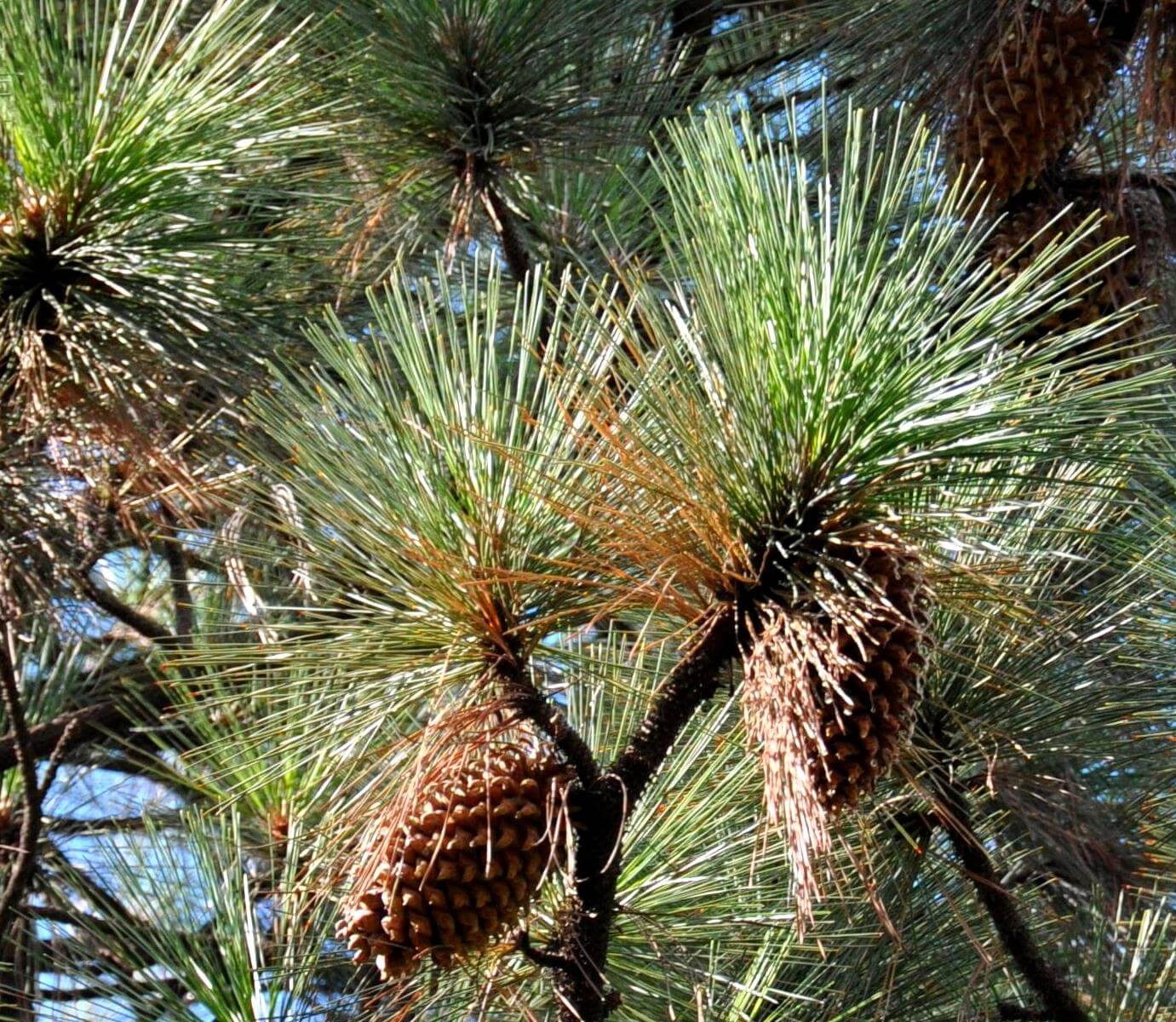
The Pinus radiata, native to Mexico and California, is distinguished by its heavy cones with irregular crowns. Additionally, it’s often referred to as the big cone pine, slash pine, or nut pine. While it may not have significant economic value, aside from being utilized as firewood, this species does hold some ornamental appeal. Specifically, it’s cultivated for large properties and parks due to its attractive presence.
Dwarf Mountain Pine (Pinus mugo)
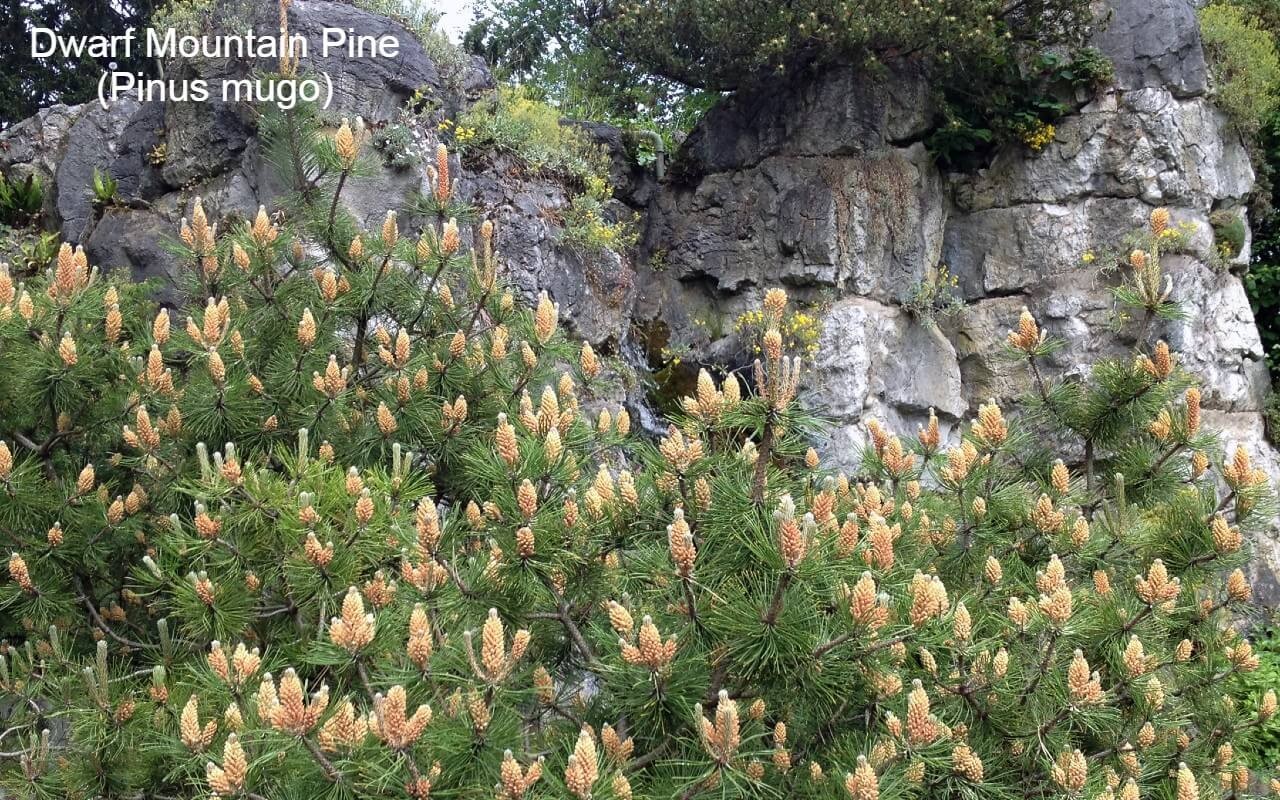
The Monterey Pine, a low-growing evergreen, is an ideal choice for landscaping due to its compact stature of up to 6 feet tall. This resilient tree boasts dark green needles, deep brown bark, and cones that add texture and visual interest to its natural beauty. Notably, it’s also highly adaptable and drought-tolerant, making it a practical option for areas with limited water resources.
One of the most notable applications of this species is in coastal landscaping, where it plays a crucial role in controlling erosion. The Ophir cultivar, which has garnered numerous awards, is particularly renowned for its exceptional characteristics.
Eastern White Pine (Pinus strobus)

The Eastern White Pine is a highly valued species in North America, prized for both its timber and ornamental value in landscaping. Despite its rapid growth rate, regular pruning can be used to keep it compact and suitable for use as a hedge in garden settings. One of the tree’s most distinctive features is its soft, gray bark, which also contributes to its remarkable longevity.
In popular culture, the Eastern White Pine is often simply referred to as the ‘white pine’, a testament to its enduring popularity.
Foxtail Pine (Pinus balfouriana)

A unique pine species, known for its limited geographical range, can be found primarily along the tree lines of the Sierra Mountains. While it’s not commonly cultivated as an ornamental plant, its striking appearance makes it a popular sighting among hikers. Native to California, this rare pine has the potential to reach impressive heights of up to 50 feet.
Gray Pine (Pinus sabiniana)

The California incense cedar’s common names are foothill pine, Sabine, and digger pine. This evergreen species boasts a unique characteristic – its trunk is often crooked and covered in a sticky, resinous coating. The bark is deeply furrowed with a dark brown hue, while the foliage is a muted blue-green to gray color.
While it may not be considered visually striking, this tree has two notable advantages: it produces an abundance of resin, which can be used for various purposes, and its wood burns well, making it a valuable source of firewood.
Great Basin bristlecone pine (Pinus longaeva)

The Great Basin Bristlecone Pine is a remarkable species found in only six US states, with a unique characteristic of being one of the longest-living pine trees. Its oldest known specimen, dubbed Methuselah, boasts an astonishing age of 4,800 years, making it a true marvel of nature. This ancient tree features a twisted trunk and irregularly shaped branches, giving it a rugged appearance that is both striking and resilient.
To preserve its remarkable heritage, conservation laws have been put in place to protect the species, ensuring that future generations can continue to marvel at its majesty.
Italian Stone Pine (Pinus Pinea)

Native to Lebanon and Turkey, the umbrella pine is an uncommon sight in US landscaping due to its unique canopy shape, reminiscent of a miniature umbrella. In contrast, this species thrives in Mediterranean climates where it’s cultivated for its edible pignoli nuts, which are highly sought after across Europe. When given the right conditions, the umbrella pine can grow remarkably tall, reaching heights of up to 60 feet.
Jack Pine (Pinus banksiana)

While not typically employed in landscaping due to its rugged appearance, Monterey Pine (Pinus radiata) does possess certain characteristics that make it suitable for use as windbreaks in rural settings. As a low-maintenance species, this pine is well-suited to areas where upkeep may be limited. One of the notable features of Monterey Pine is its unique twisted needle arrangement and curved cones, which set it apart from other pine species.
Japanese Black Pine (Pinus thunbergii)

This iconic specimen tree is renowned for its distinctive cone-shaped silhouette, making it a popular choice for bonsai cultivation in landscapes. Its dense, tufted foliage boasts a rich, deep green hue that adds depth and visual interest to any setting. Native to South Korea and Japan, this majestic tree can reach impressive heights of up to 50 feet tall.
Japanese red pine (Pinus densiflora)
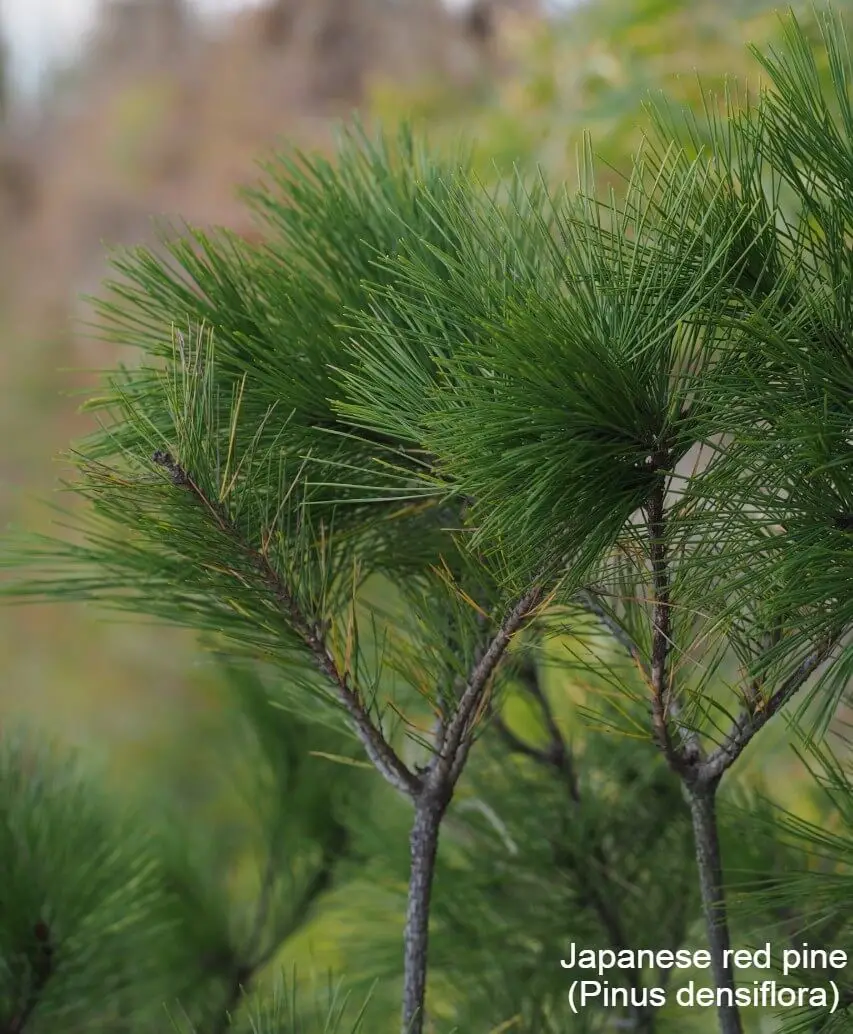
The Tanyosho pine, also known as the dwarf pine, is a species native to Japan that stands out due to its unique characteristics. Its tufted, dense, yellow-green needles give it an umbrella-like appearance, making it a popular choice for bonsai enthusiasts and gardeners alike. Not only can this adaptable species be grown as a tree or shrub, but it’s also often used as a foundation plant for bonsai trees, adding to its versatility and charm.
Japanese White Pine (Pinus Parviflora)

This tree species is renowned for its picturesque landscape appeal, boasting a sprawling shape with a flat canopy. Its delicate, bluish-green foliage and intriguing brown-purple bark make it a favorite among bonsai enthusiasts. Moreover, it originates from the eastern hemisphere, being native to Japan and South Korea.
Jeffrey Pine (Pinus jeffreyi)

Despite its reputation for slow growth, the [plant name] possesses several appealing characteristics that make it a valuable addition to any landscape. One of its most notable features is its remarkable ability to thrive in arid conditions and poor soil quality, making it an ideal choice for areas with limited water resources. Additionally, the plant’s vanilla-scented bark and gray shoots add a unique aesthetic appeal.
However, it’s worth noting that [plant name] has gained notoriety as an invasive species in California, highlighting the importance of responsible planting practices.
Korean pine (Pinus koraiensis)

The Eastern White Pine boasts a unique combination of adaptability and cold-hardiness, with its pyramid-shaped structure and dense, blue-green foliage that radiates from the base to create an elegant, symmetrical silhouette. Its copper cones are particularly notable, as they produce edible nuts that can be harvested for culinary purposes. As the tree ages, it will gradually transform into a dome-like shape, adding an air of sophistication to any landscape or architectural setting.
Notably, this versatile species is prized in industries such as landscaping, construction, and woodworking for its sturdy, durable wood.
Lacebark Pine (Pinus bungeana)
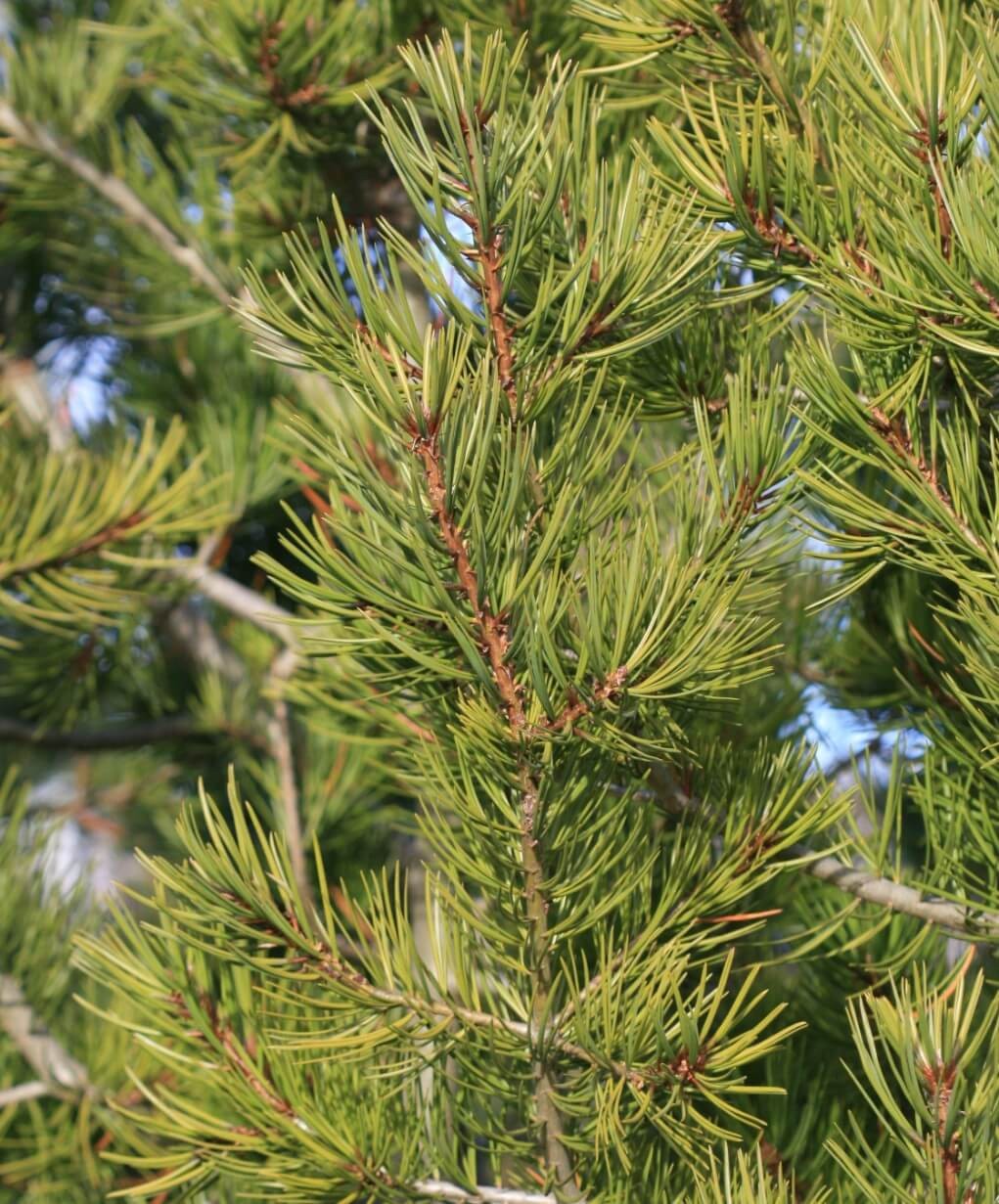
The Chinese Elm’s unique characteristics make it a sought-after ornamental tree. Its gray and maroon peeling bark bears a striking resemblance to the sycamore, earning it a special place in many landscapes. This slow-growing species typically adds only about one foot of growth per year, making it an ideal choice for those with limited space. Additionally, its Chinese origins give it a distinct cultural significance.
Limber Pine (Pinus flexilis)
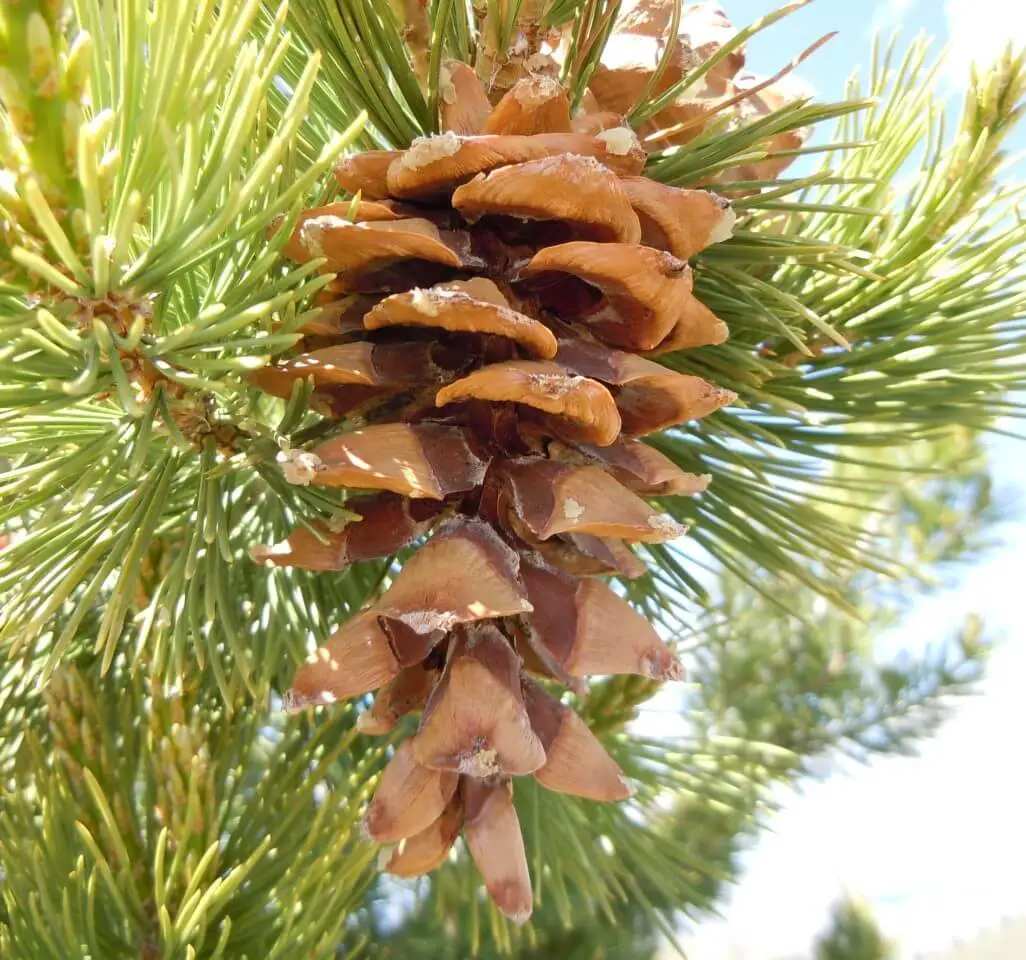
This majestic tree boasts a distinctive feature set, characterized by its sturdy and long-lasting trunk, irregular silhouette, and striking blue-green foliage. The dark gray bark adds to its rugged charm. As an ornamental pine, it’s highly sought after for landscaping purposes, while also serving as a vital food source for the forest’s inhabitants. Its versatility extends to commercial cultivation, where it’s prized for its role in providing Christmas trees.
Loblolly Pine (Pinus taeda)

This majestic tree thrives in landscapes characterized by boggy and overly damp soil conditions, a trait that’s deeply rooted in its native habitat – the swampy regions of the southeast USA. What sets it apart is its distinctive straight trunk, a feature that becomes even more striking as it matures. As it grows taller, it naturally sheds lower branches to make way for its majestic crown towers. Under ideal temperate climate conditions, this tree can reach impressive heights of up to 80 feet.
Lodgepole Pine (Pinus contorta)

The eastern white pine (Pinus strobus) is one of the most widely distributed conifer species, with numerous common names such as beach pine and tamarack pine. Its distinctive contorted trunk allows it to thrive in environments prone to strong winds, making it an ideal choice for construction purposes. In fact, its wood is often used for lumber, veneers, and poles, highlighting its versatility and practicality.
Longleaf Pine (Pinus palustris)

A majestic tree species, native to the Southern United States, can grow remarkably tall, reaching heights of up to 100 feet. Its distinctive feature is its straight trunk, adorned with lengthy, deep green needles that can stretch up to an impressive 1.5 feet in length. This remarkable characteristic earned the tree its name. Moreover, it plays a significant role in the economy as a source of pulpwood and construction lumber, making it a valuable resource.
Luchu Pine (Pinus luchuensis)

The Okinawan Ryukyu pine, also known as the old-style pine, is a unique and striking ornamental native to Japan’s southernmost islands. Its angled branches and distinctive brown-black bark give it a commanding presence in coastal landscapes. The tree’s flat crown and dense tufts of needles create a visually appealing display, with some specimens capable of reaching impressive heights of up to 80 feet.
Macedonian Pine (Pinus peuce)

Native to Macedonia and the southern Balkan region, Pinus peuce is a hardy pine species well-suited to cold climates with high humidity. Pruned and cultivated as a shrub for landscaping purposes and erosion control, its versatility has made it a popular choice. Despite being classified as a softwood, this durable species finds use in carpentry and woodwork projects.
Maritime Pine (Pinus pinaster)

Hailing from Morocco and southern Europe, the pine species in question boasts a unique profile that has led to its cultivation for both commercial and landscaping purposes. Commercially, it is prized for its resin and timber production, making it a valuable resource. In terms of aesthetic appeal, its distinctive upswept branches and cone-shaped appearance make it a popular choice for landscaping endeavors.
The species is also colloquially known as French turpentine pine, a testament to its versatility and widespread adoption.
Mexican pinyon pine (Pinus cembroides)
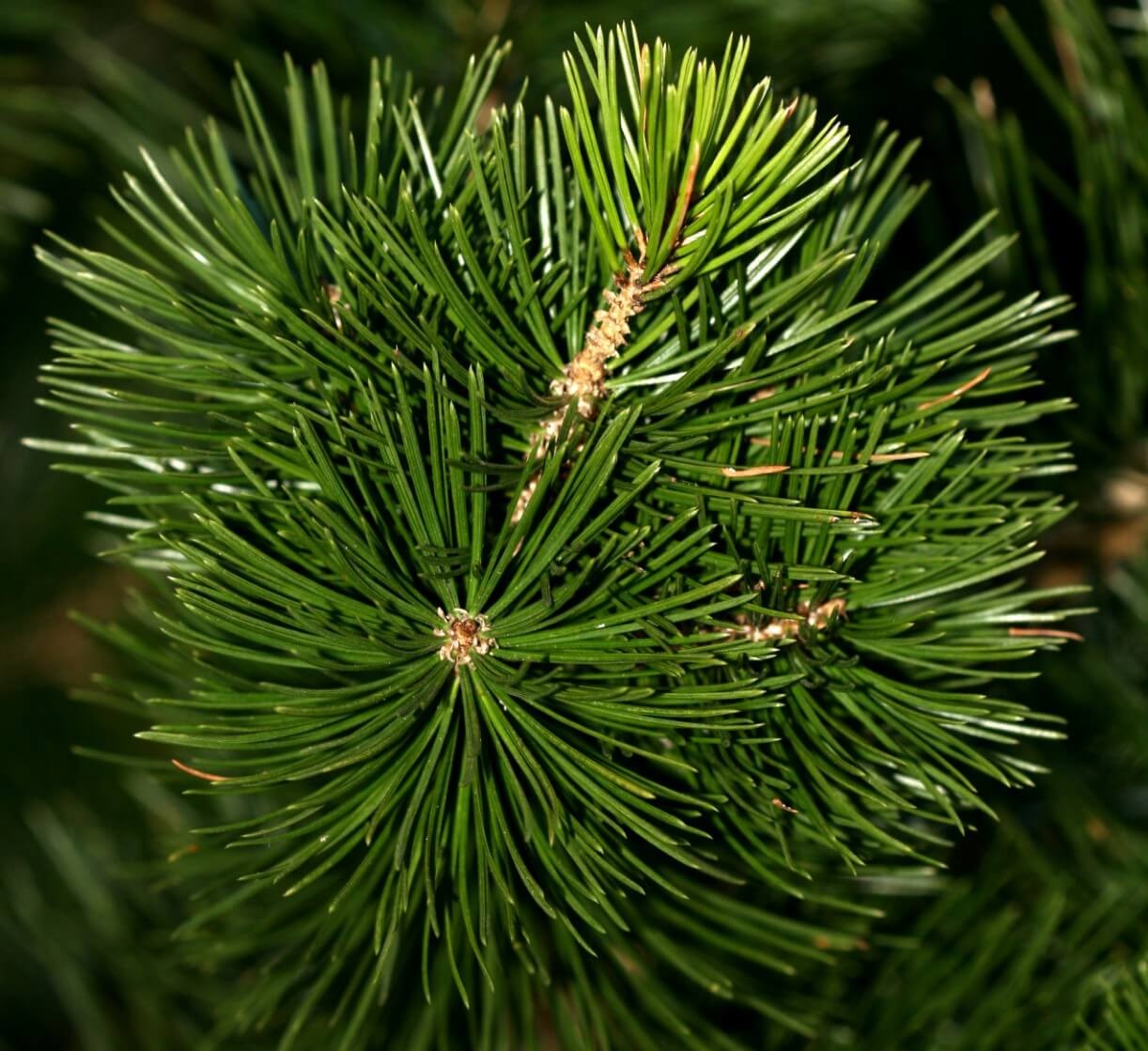
The Colorado Pinyon Pine is a resilient tree that thrives in dry environments, boasting vibrant blue-green needles and a conical shape that sets it apart from its distant cousin, the remote pinyon pine. Its red-brown cones are not only a striking feature but also produce edible pine nuts, which can be harvested from the hard-shelled fruit. When mature, this tree can reach an impressive height of 70 feet.
Mexican Weeping Pine (Pinus patula)

The Mexican-native pinus patula, also referred to as the patula pine or jelecote pine, is characterized by its unique drooping needles that evoke a weeping willow tree-like appearance. Notably, these needles are tufted in shape. This species plays a significant role in the lumber industry and is often used as an ornamental pine for landscaping purposes.
Mexican white pine (Pinus ayacahuite)

The majestic ceiba tree holds immense cultural and commercial significance in Mexico, earning it the nickname ‘cloud tree’ due to its impressive height of up to 150 feet. This remarkable characteristic is just one aspect that sets it apart from other species. Its versatility as a woodworking material has made it a valuable resource for carpentry and furniture-making industries.
The ceiba’s striking features include an ash-gray trunk, a rounded dome-like shape, and clusters of bright green leaves that grow in bundles of five, adding to its unique appeal.
Monterey Pine (Pinus radiata)

In some regions, the Radiata Pine is affectionately referred to as the native Mexican or Californian pine tree. Its distinctive features include its robust trunk and sturdy branch structure. This species has proven itself to be an excellent natural windbreak in California and New Zealand, where it has been successfully introduced. Moreover, due to its durability and versatility, it is a popular choice for construction lumber purposes.
Montezuma pine (Pinus montezumae)
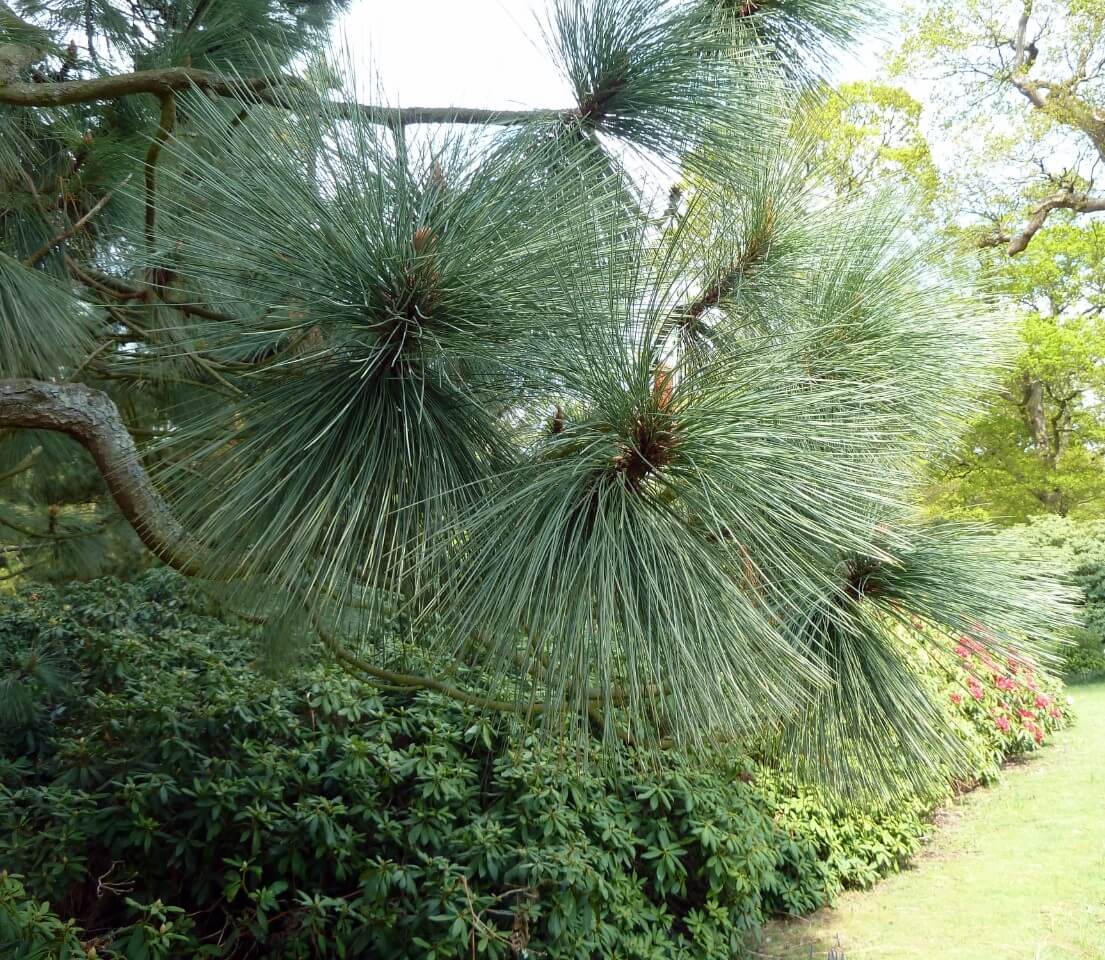
Native to Mexico and Central America, the Ocote tree has been utilized in traditional medicine for its various properties. The bark of this remarkable tree is valued for its diuretic and antiseptic qualities, making it a valuable resource for natural remedies. Not only does the Ocote tree produce edible nuts, but its foliage also retains its vibrant green color throughout the year, making it a unique feature in the botanical world.
Mugo Pine (Pinus mugo)

The dwarf pine, with its robust branches, is a shrub that excels at blending into the surroundings. Its ability to thrive as a specimen tree in landscapes has earned it a spot as a go-to choice for gardeners seeking erosion control solutions. Among its most popular species are Hesse, Gnome, and Compacta, each offering unique characteristics that make them ideal for mass plantings.
Pitch Pine (Pinus rigida)
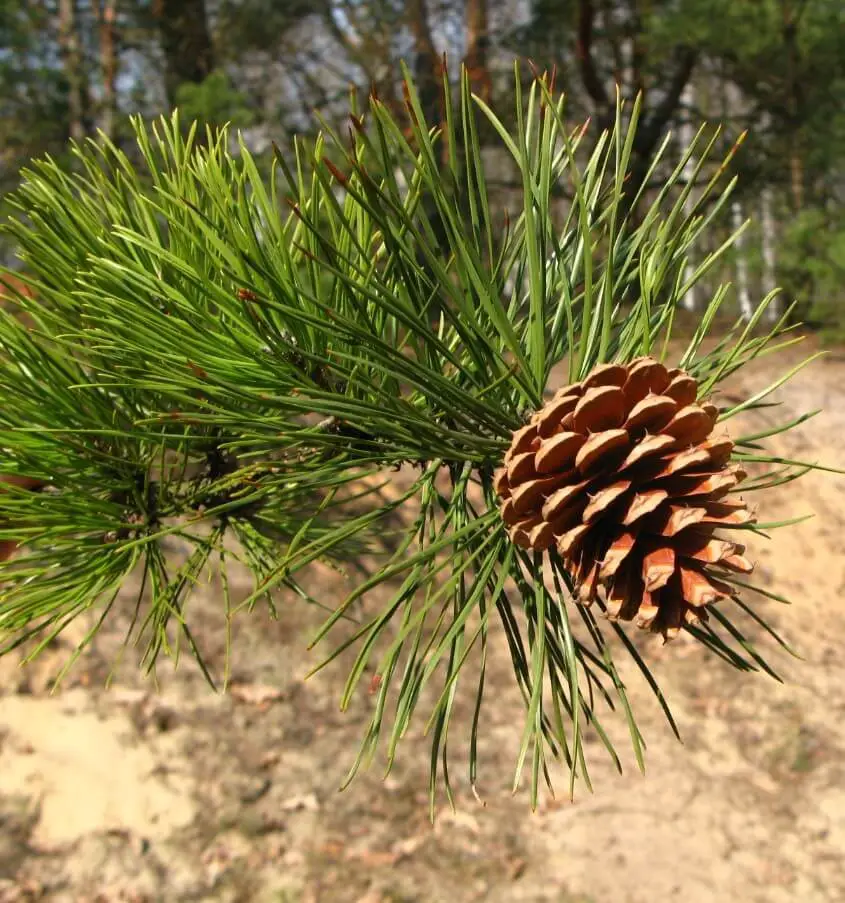
In many Native American cultures, this species holds deep significance due to its historic use in crafting canoes. However, its importance extends beyond cultural heritage, as it has been employed in various industries such as resin production and railroad construction. Although it may not boast a visually striking appearance, the tree’s versatility has earned it recognition as a specimen tree in both Canada and eastern regions of the United States.
Its timber is also highly valued, making it an important contributor to the forestry sector.
Pond Pine (Pinus serotina)
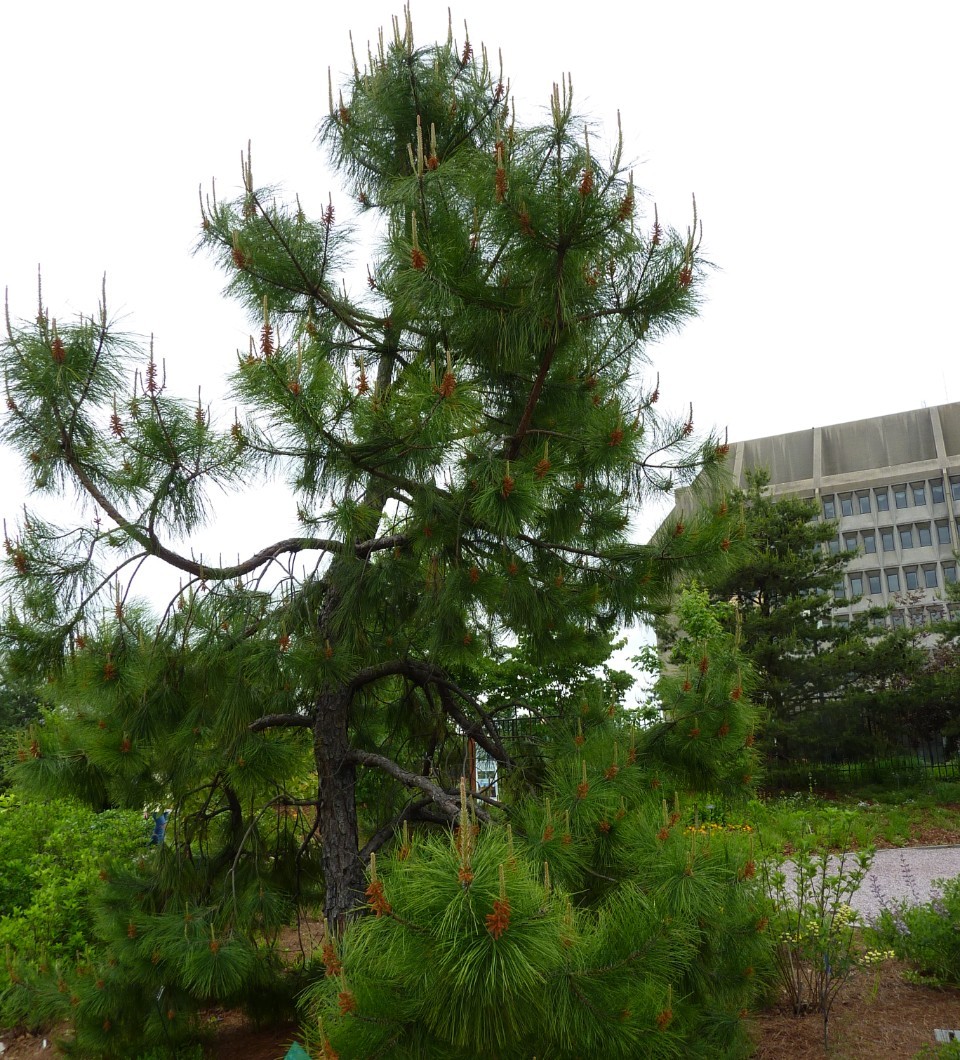
The Shortleaf Pine (Pinus echinata) is a unique and fascinating species that thrives in the eastern regions of the United States. Also known as pond pine or marsh pine, it boasts an intriguing characteristic: its seed cones only open after being exposed to fire. This remarkable adaptation allows the tree to disperse its seeds effectively. In addition to their role as landscape specimens, Shortleaf Pines also hold commercial value for pulp production.
Ponderosa Pine (Pinus ponderosa)

Native to Canada and the US, this tree also goes by the names bull pine or Black Jack. It’s capable of growing quite massive, boasting thick trunks that make it a highly valued resource in commercial-grade lumber production. When used as an ornamental piece, it’s often naturalized in expansive spaces and cherished for its striking deep-fissured bark.
Red Pine, Norway Pine (Pinus resinosa)

Minnesota’s state tree, the Red Pine (Pinus resinosa), owes its name to its uncanny resemblance to the Norwegian Scotch Pine. Characterized by its self-pruning habit and distinctive red-brown, scaly bark, this evergreen is not only a striking sight but also plays a significant role in Minnesota’s lumber industry. Its unique resinous aroma is another notable feature of this tree, which has been an integral part of the state’s ecosystem for centuries.
Sand Pine (Pinus clausa)

The sand pine’s unique characteristic is its affinity for sandy soil, a trait reflected in its name. Indigenous to Alabama, Florida, and other southern US states, this evergreen tree has adapted to the region’s terrain. Furthermore, the cones of the sand pine are remarkable for their ability to open only after being subjected to high temperatures – a process that mimics the natural effects of fire.
Although it may not be a popular choice for landscaping purposes, young sand pines are occasionally cultivated and pruned as Christmas trees, offering an alternative to more traditional tree species.
Scots Pine (Pinus sylvestris)

The Scots Pine, a native to Europe and Asia, boasts rapid growth, making it a popular choice for cultivation as a Christmas tree. Its juvenile forms are often used in landscape design as specimen trees, showcasing their unique characteristics. One of its defining features is its cone-like shape, which stands out against the backdrop of its distinctive red-brown bark.
Shore Pine (Pinus contorta)

The twisted pine, also known for thriving in mountainous, dry, and coastal regions, earns its name from the unique characteristics of its contorted branches and trunk. The tree’s glossy, deep green needles feature streaks of paler green, while its copper-tinged cones add an extra layer of visual interest. As a native North American species, it has the potential to grow up to 160 feet in height.
Siberian pine (Pinus sibirica)
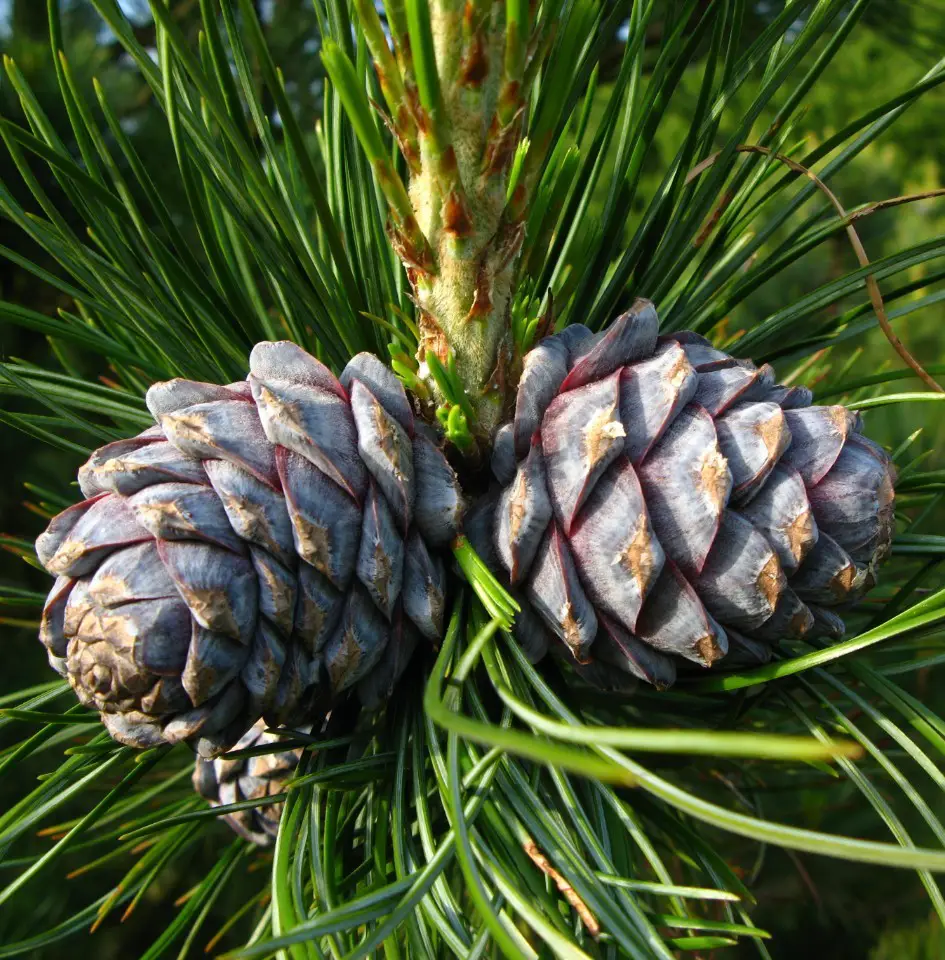
The Scots Pine, also known as Pinus sylvestris, is a highly valued species of pine due to its role in producing pine oil. Its unique characteristics include a rich brown trunk, dark-green, bristle-like needles, and crowns adorned with scaly cones. Moreover, the tree holds significant cultural and historical importance in the Ural region, where myth and folklore are deeply intertwined with its legend.
Single-Leaf Pinyon Pine (Pinus monophylla)
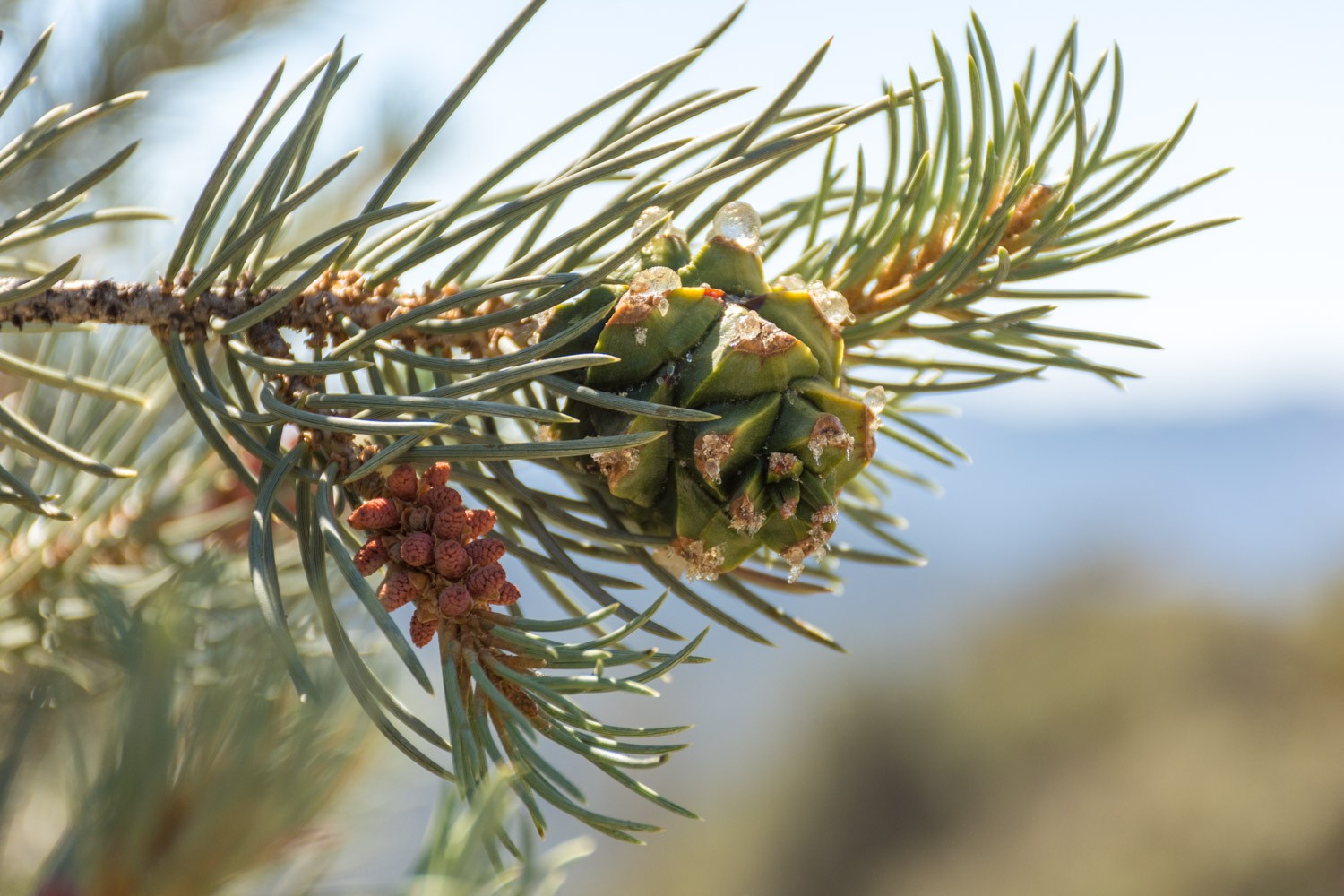
The singularly named single-leaf pinyon pine stands out from its peers with its distinctive feature: individual needles instead of clusters. Its rugged, flaking bark is a deep dark brown hue, adding to the tree’s unique appeal. While young saplings are often cultivated for Christmas trees, they are less commonly used in landscaping due to the challenges involved in propagating this species.
Slash Pine (Pinus elliottii)

The Southeastern United States is home to the Cuban pine, also known as swamp pine, which plays a vital role in reforestation initiatives and timber production. This species boasts impressive growth rates, featuring lustrous, dark green, broom-like foliage that contributes to its distinctive ovate-pyramid shape.
Stone pine (Pinus pinea)
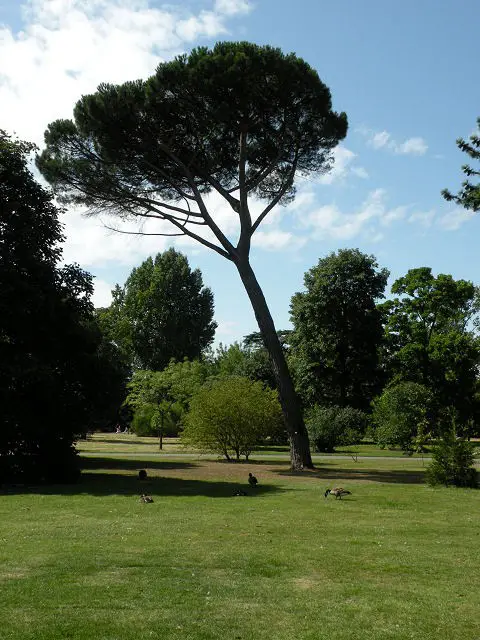
The Mediterranean pine, also known as the parasol pine, is distinguished by its flat top and umbrella-shaped appearance. This ornamental pine is widely used in landscaping due to its striking appearance. Interestingly, like the pinyon, it produces edible nuts. A notable feature of this species is the way its dark green foliage grows in pairs. In its natural habitat, the Mediterranean pine can grow up to 80ft tall and has a remarkable lifespan of around 150 years.
Sugar Pine (Pinus lambertiana)

The sugar pine is a remarkable tree, boasting the distinction of being the tallest-growing specimen among its peers, with some individuals reaching heights of 270 feet. Its impressive stature is matched only by the size of its cones, which can grow up to an astonishing 2 feet in length. As it matures, the tree’s branches spread out widely, eventually shedding their foliage and leaving a bare base.
One of the sugar pine’s most notable features is its production of edible nuts, often referred to as pine nuts. These nutritious treats are a valuable resource for many creatures. The tallest recorded sugar pines can be found in the majestic Yosemite National Park.
Swiss pine (Pinus cembra)
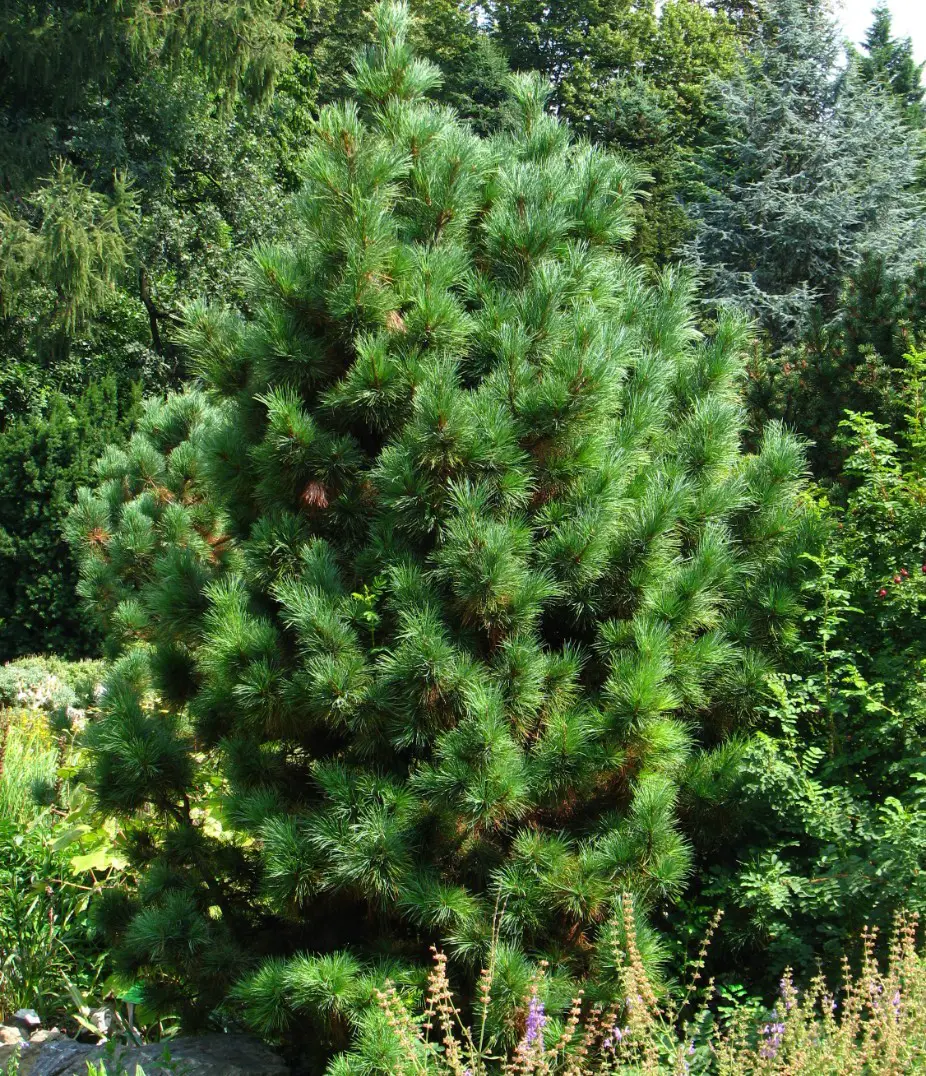
The Arolla pine, also known for its vibrant and dense dark green foliage that maintains its color throughout the year, has a range of cultivars that can be used as landscape trees due to their compact size. Meanwhile, Swiss pines have earned a reputation in the Alps for producing high-quality wood products, such as bed frames, and are considered reliable sources of timber.
Tenasserim Pine (Pinus latteri)

In Southeast Asia, there’s a majestic pine species that stands out from the rest. Characterized by its striking dark orange bark and impressive height of up to 150 feet, this evergreen is a sight to behold. As it matures, it develops a rounded shape, reminiscent of the Aleppo pine. With its adaptability to warm climates, it’s a popular choice for landscape design in regions with mild temperatures.
Torrey Pine (Pinus torreyana)

The Soledad pine, also known as the Del Mar pine, is a rare and endemic species found exclusively in southern California’s coastal regions. Its most distinctive feature is the broad, twisted shape of its branches, which gives it an open-crowned habit that sets it apart from other pine species. Due to its rarity, conservation efforts are in place to protect this unique tree from harm.
Turkish Pine (Pinus brutia)

A renowned warm ornamental pine species hails from West Eurasia, with strong ties to Turkey, Ukraine, Bulgaria, Italy, and Greece. Its remarkable adaptability to extreme heat and drought conditions has earned it a special place in the hearts of many enthusiasts. Furthermore, its striking brown-red bark, characterized by deep fissures, adds an extra layer of visual appeal, making it a highly sought-after ornamental option.
Two-Needle Pinyon Pine (Pinus edulis, Colorado pinyon)

The single-needle pinyon pine, a smaller species, stands out for its unique characteristics. Its small to medium size makes it an ideal choice for landscaping and even serves as a popular specimen pine for decorative purposes. Additionally, this versatile tree is cultivated as a Christmas tree, bringing festive cheer to many homes. Notably, the pinyon pine’s dark brown-gray bark features a distinctive scaly, furrowed texture, while its edible pine nuts offer a delicious treat.
Virginia Pine (Pinus virginiana)
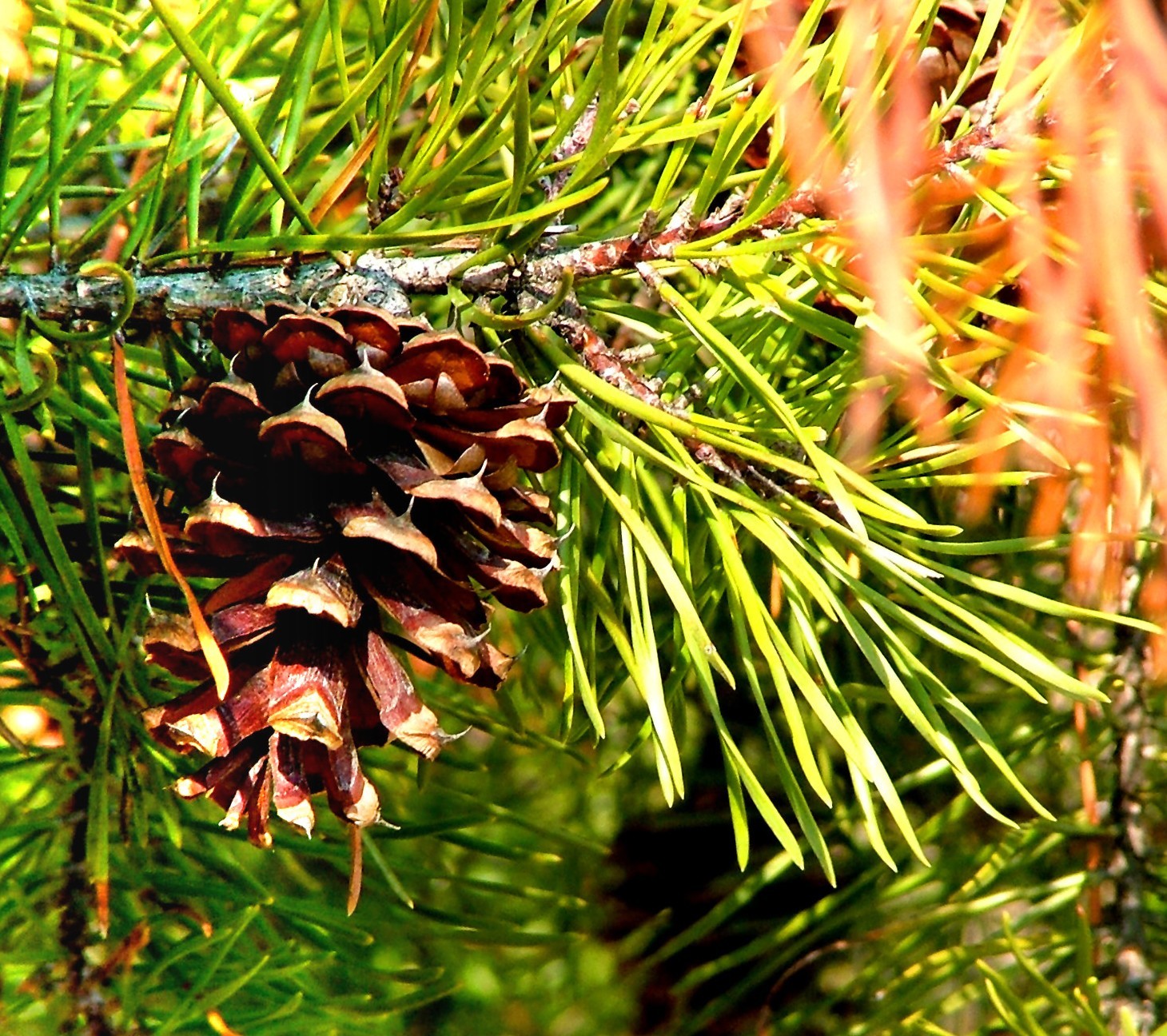
The Eastern White Pine (Pinus strobus) is a well-loved winter pine native to the eastern United States, also known as the Jersey Pine. Its distinctive angled cones and vibrant young shoots that bloom in shades of pink or golden yellow – depending on the specific cultivar – make it a popular choice for landscaping and Christmas tree farming.
Western White Pine (Pinus monticola)
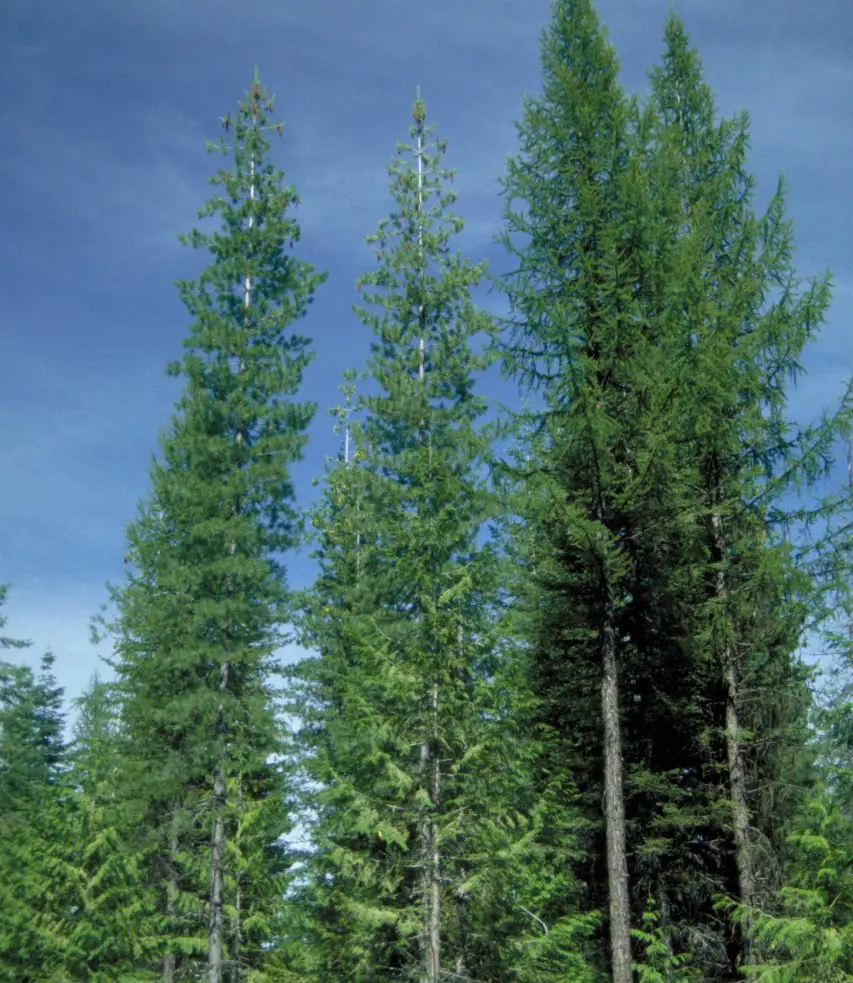
The Rocky Mountain white pine, a close relative of the eastern white pine, can grow up to 150 feet tall. While it’s not typically used in landscaping due to its massive size, this species holds a special place in the western USA and Canada, where it’s native and also known as the silver pine or Idaho white pine.
Whitebark Pine (Pinus albicaulis)

The limber pine’s cousin, the scrubby and slender limber pine, boasts an umbrella-like appearance that sets it apart from other species. This resilient conifer thrives in high-elevation locations, particularly in Canada and Western USA, where its unique characteristics allow it to flourish. The name ‘limber’ is attributed to the tree’s distinctive whitebark, which features a fissured, ashy texture.
While it does grow quite tall, the limber pine is not typically used in landscaping due to its stature. Furthermore, conservation laws protect this species, ensuring its continued survival and preservation.
Types of indoor pine trees
Norfolk Island pine (Araucaria heterophylla)
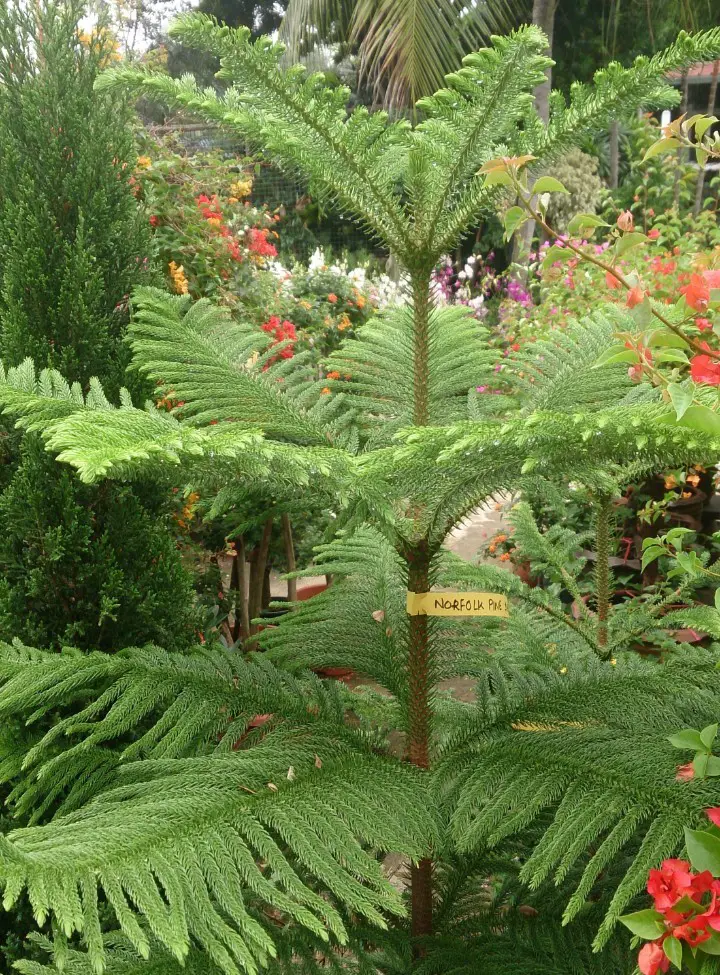
The Chinese Evergreen, also affectionately referred to as the house pine due to its common cultivation indoors in temperate climates, is a slow-growing, majestic specimen tree prized for its striking, fountain-like foliage that retains its rich green hue year-round. While it presents many benefits, this ornamental gem does require specific growing conditions to thrive.
Pine vs fir
Despite being conifers, pines (Pinus) and firs (Abies) exhibit distinct differences. Firs are generally restricted to cold regions and thrive as trees, whereas pines can tolerate subtropical environments and are often trimmed to maintain a shrub-like appearance. In terms of needle length, firs have shorter needles compared to pines, which can range in shape from upright and tall to irregular and jagged. The cones of the two species also differ significantly.
Fir cones are typically egg-shaped and situated at the apex of the tree, whereas pine cones are elongated and can be found scattered throughout the branches.
Pine vs spruce
While both spruce and pine trees share similarities in their subtropical climate preferences and ornamental values, they exhibit distinct differences that set them apart. Spruces boast symmetrical crowns, a trait not typically seen in pines whose crown shapes are more irregular. Furthermore, pines possess softer, flatter needles as opposed to the woody, sharper foliage of spruce trees.
A notable characteristic separating these species is their cone morphology: pines have thick, woody, and scaly cones, whereas spruces feature thin, papery ones. Additionally, the bark texture differs significantly between the two; spruces display furrowed barks from a young age, while pine trees sport softer, less textured bark.
From an economic perspective, pines are generally more widely available and affordable compared to spruce when it comes to timber production.
Conclusion

Pine trees are a testament to their versatility, with their ancient coniferous profile and multitude of uses. Beyond being a popular ornamental choice for landscaping, pine trees have significant commercial value in the production of woodworks, timber, and lumber. Additionally, they’re a valuable source of edible nuts, making them a sought-after species globally. The various types of pine trees that exist serve as a reminder of their enduring popularity and cultivation around the world.
Related Posts
Discovering the vast array of plants available online is a thrilling experience. From the iconic apple trees to evergreen varieties that thrive in every season, there’s something for everyone. But did you know that becoming an arborist – a professional tree care expert – requires more than just a green thumb? Our guide will walk you through the steps to turn your passion into a career. And let’s not forget about the impact trees can have on your property value.
Not only do they boost curb appeal, but strategically removing certain trees can also enhance your home’s beauty. For those looking for a more tropical vibe, the Lady Palm (Rhapis excelsa) is a low-maintenance option that requires careful care. And if you’re looking to grow organic blueberry plants in your garden, we’ve got tips and tricks to help you succeed.


